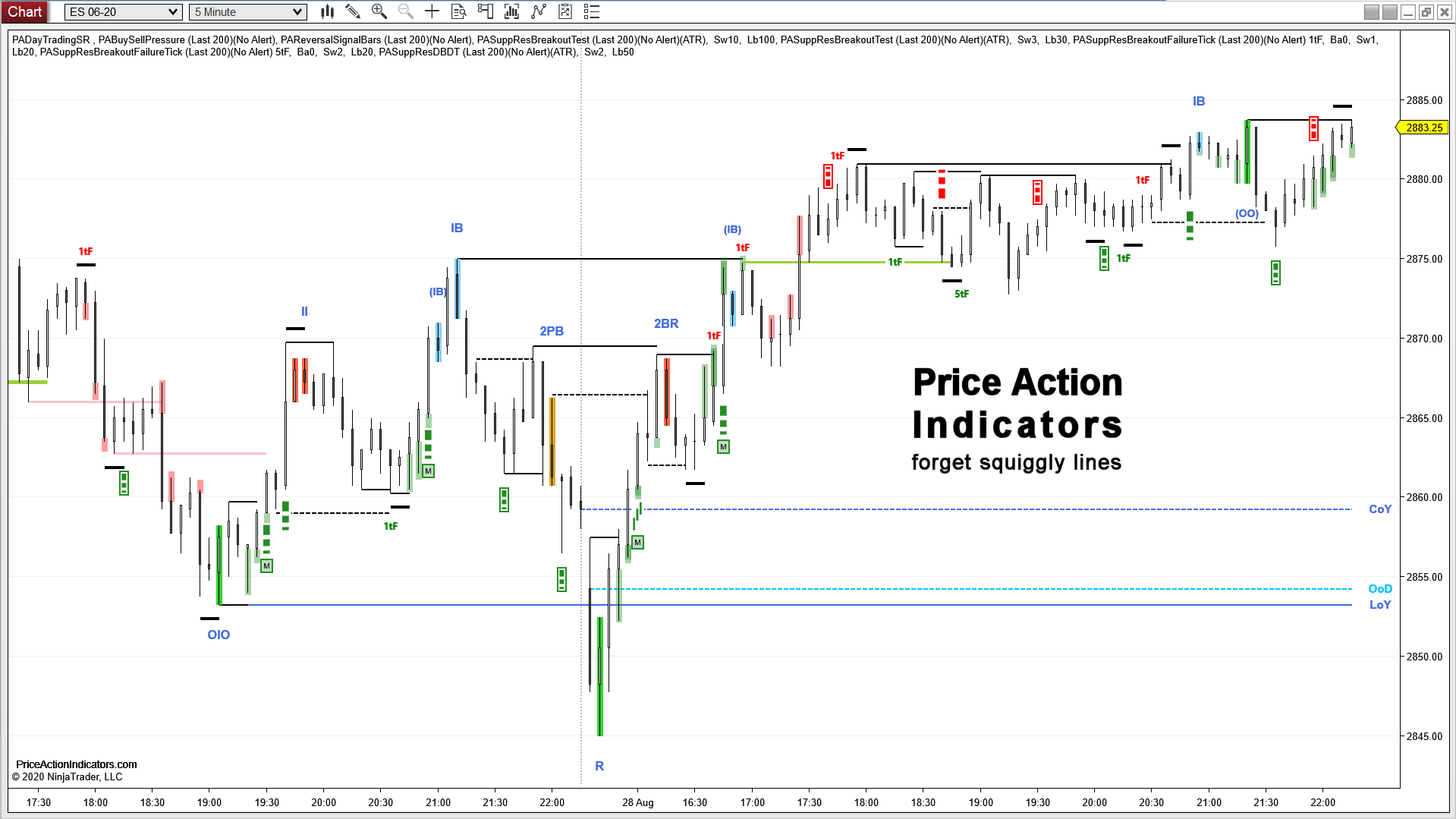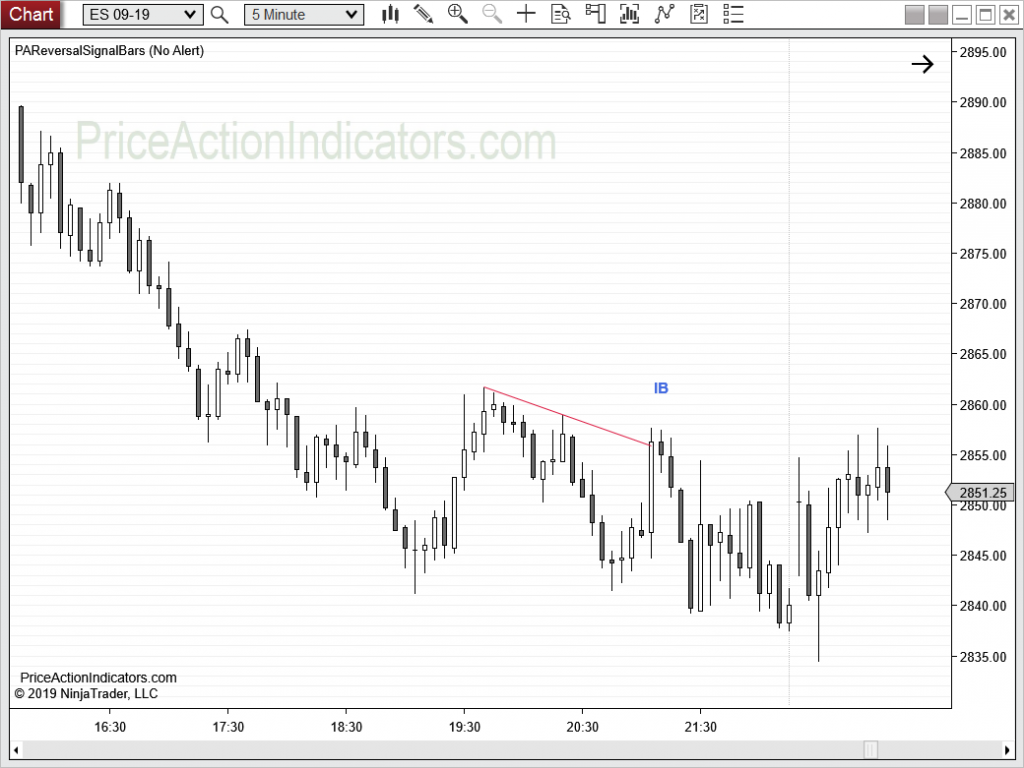Inside bars (by definition) are completely overlapped by the prior bar and must be considered to be a small trading range. This usually makes them poor Signal Bars, unless they occur with trend or meet a couple more criteria.
Small bar at one end of a large trend bar
A Small bar at one end of a large bar is a setup for a fade of the large bar. The size of the inside bar is the most important criteria, it should be less than half the size of the outside bar (the bar that contains the inside bar).
If both bars have prominent tails, it makes sense to wait for a second entry (2E) instead. If there is confluence, take the 1st entry. Like in the below example there is a failed breakout of the bear trend line and a possible double top lower high.
Bars with a body, that is entirely inside the body of the containing bar, count as inside bar variants, as long as their tails are not too big.
At times its fine to fade a large bar off a same colored inside bar, if the entry is within the direction of the overall trend.
While both bars were bear bars, the overall trend was up. The inside bar is a deep pullback, a H2 and a micro double bottom.
The most simple way is to trade inside bars only, where the inside bar is less than half the outside bar, only with the overall trend, counter trend only after a swing move or a third push.
Reversals
Sometimes you get an inside bar reversal. The most important criteria to trade a reversal off an inside bar is a trend channel line overshoot (TCLOS) or better a 2nd TCLOS and if the entry still leaves room for a profitable trade to the other end of the bar, that contains the inside bar.
Final Flags
A final flag (FF) signifies sudden loss of momentum, a horizontal, overlapped pattern after a trend. It can be one bar or a couple of overlapped, sideways bars. A breakout often fails and tries to reverse the trend. The 1st target for the failed breakout traders is the other end of the FF.
Please tell us what you think is missing, any kind of feedback is highly appreciated – contact us










